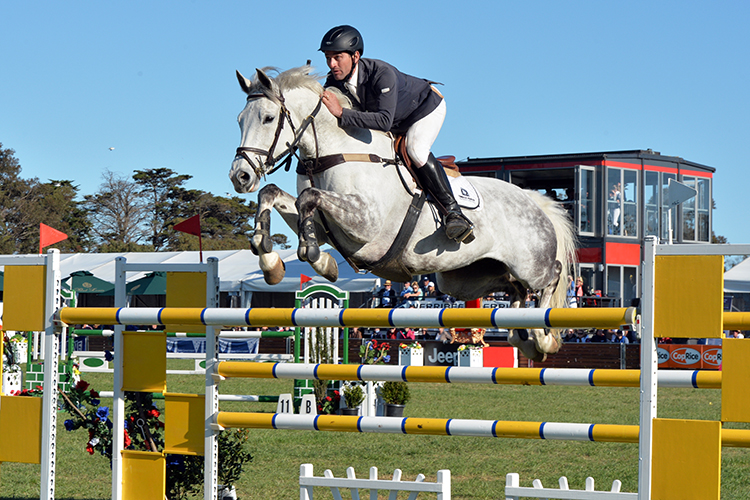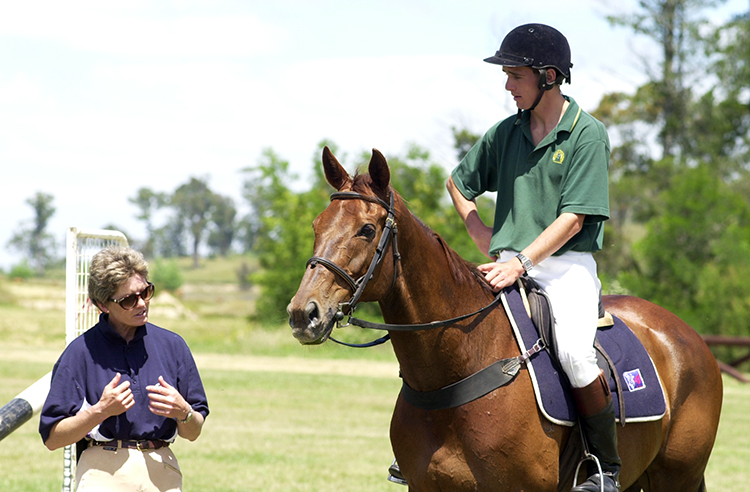 Story by Chris Hector and photos by Roz Neave
Story by Chris Hector and photos by Roz Neave
Last month, Vicki worked with a very green young horse just coming into the sport of showjumping, this month, she works with a horse that has already made it into World Cup ranks, with a very exciting young rider, Tim Clarke. While he was on the summer showjumping circuit, Tim was smart enough to approach some of the senior riders for assistance, so Vicki by the time we recorded our lesson had already worked with Tim – and had quite a feel for the horse, and the rider…
Let Vicki, define her role as teacher:
“Tim is a very capable young rider, with a great feel for a distance and a good feel for the job. What Tim lacks is a feel for the flatwork, and that is 90% of jumping – getting a horse travelling in a good way. He can ride to any sized fence, on a beautiful distance on a beautiful rhythm, but he has still got to learn about making his horse straight, and learning to work with Thoroughbreds to get them to relax.”
“That is the toughest thing. If you can ride a Thoroughbred you can ride any horse – because they are hot, they are difficult, they are quick, they are tense. That is the only thing Tim wouldn’t have learnt in his time in Europe because they have given up on riding hot, tense, quick Thoroughbreds because they are too tricky. Sure they use Thoroughbred blood to improve the jump and get their Warmbloods a little more athletic and light, but they don’t want the hot quick temperament.”
“Tim’s horse, Harvest Moon has been in a few World Cup rounds, and he is quite competitive, but he is your typical hot, quick, tense Thoroughbred.”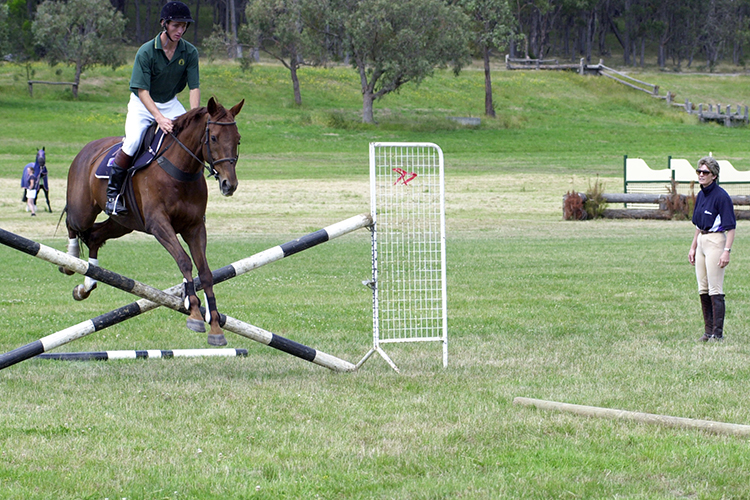
So when Tim started riding over a little cross rail, the aim was to make everything very slow, and smooth, and predictable. And all the while, Vicki was making sure Tim didn’t take any of those Thoroughbred-driven-short cuts.
“Just be careful when you do that turn, don’t pull him into it with your inside rein. It’s the same with a lot of Thoroughbreds, you always get tempted to ride off your hand because they don’t like leg. It is very hard to get the Thoroughbred to accept leg because they get hot and they run away from it, so we take the leg off. It is always a battle to get the Thoroughbred to accept leg.”
“We do a lot of work with this horse on the left side, because that’s the side he always wants to bulge to, through his left shoulder. Our aim is to get him so he just nicely moves off our leg, not shooting off.”
And of course, you can’t work on the leg bit, without thinking about the front end at the same time…
“Always try to soften off in the hand so he just carries himself.”
“At the end of the day relaxation is the key for a horse like this to stay careful. The minute they get worried or tense, they stop thinking about being careful at the fence.”
It was one of those frustrating lessons that seem to keep going on without anything coming right, with Tim trying ever so hard to stop the horse on the landing side of the fence QUIETLY. All the horse wanted to do was get to the new fence, as fast as possible – it took him an age to learn there was no next fence. That this was it, jump, land, stand quietly, relax…
“He always wants to drift out on landing, so we put the pole there to keep him straight. Tim you must try to relax a little with him, you’re sitting a little rigid and stiff. When he relaxes he really reacts to a little rub – when he is tense, he can’t react. As Conrad Homfeld says, the most valuable rub is the relaxed rub. Circle him to get him soft without jamming your hands down, I can see the muscles sticking out on your forearms, you’ve got to be softer.”
“If the horse wants to shoot off after a fence, stop and softly back up, he has to learn to wait, to be told what to do, he doesn’t make his own decisions. The horse’s reaction to the rider must be, what would you like me to do? You need a nice relationship, a partnership – but you are the senior partner.”
“To get him to relax you need what Wayne describes as a cuddling leg. Be softer with your arms, and when he wants to take the contact out and down, let him have it.”
“The big trouble with this guy is that he makes decisions after the fence. The art of being a good rider is when to correct and how to correct.”
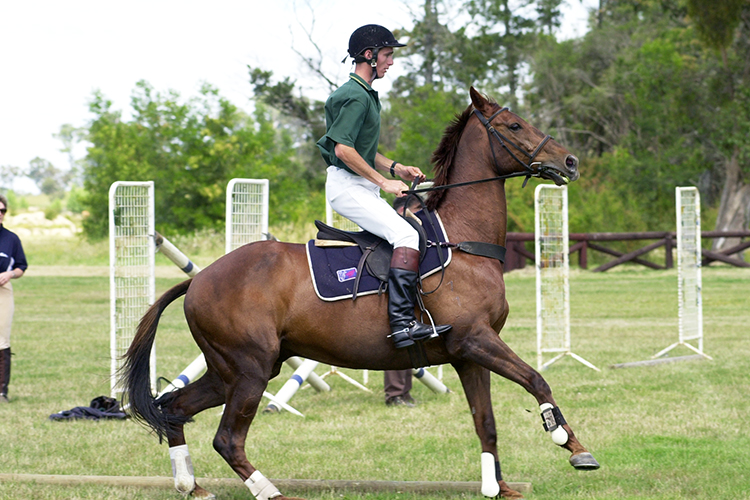
And that doesn’t mean jumping a lot of fences:
“Once the horse is A grade, there is no need to jump big fences in schooling – they know that. When Nelson Pessoa was campaigning Special Envoy, he never schooled over more than a metre!”
But it does mean more sophisticated work on the flat:
“For a jumping horse it is so important that the neck relaxes so the wither and the shoulder can come up. Bend for a few strides on one rein, then bend to the other. The horse has to learn to just bend its neck, not turn. The rider deals with three parts of the horse: Shoulder, Hindquarter and Head & Neck. The rider’s legs control the hindquarters and most of the shoulders, the rider’s hands control the head and neck.”
Still this was a jumping lesson, and Vicki kept coming back to her little gymnastic fences: “I love a little cross oxer for schooling, it produces such a beautiful shape in the jump, it gets their technique working.”
And still we kept coming back to the problem of Harvest Moon heading for the hills after every jump: “The approach is not too ghastly, the fence is not too bad, it’s the nicking off on landing. He tries his guts out to do what you want, he just doesn’t understand. You have to do things quietly, he’s got to know what you want because he’ll stress out if he doesn’t understand.”
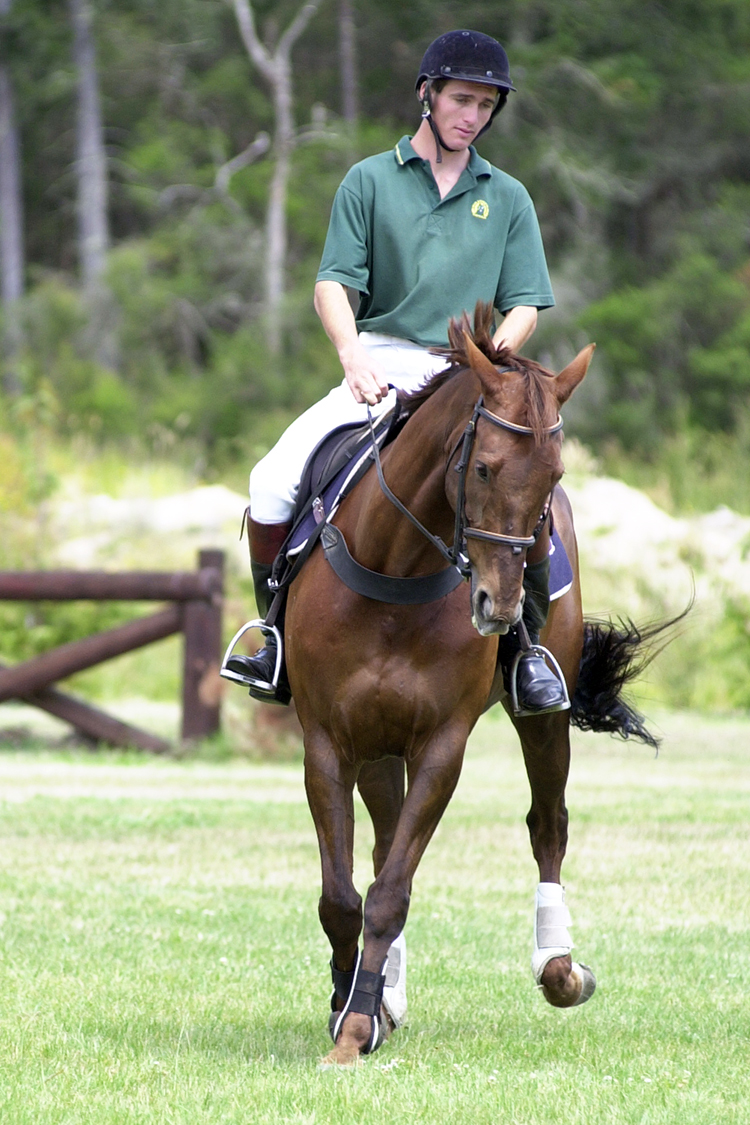
Tim was getting a nice result in the trot now, with the horse looking soft and sweetly chewing the bit in his mouth, but it all seemed to disappeared when they moved up a gear into canter, but here, Vicki thought at least part of the problem was jockey induced: “When you go to canter, you get a death grip and he gets a death grip. You have to work on getting his neck really soft, getting really friendly communication with his mouth.”
It’s a long way for a failed steeplechaser to come, but you can see Harvest Moon and Tim Clarke improving before your eyes. Harvest Moon might not end up being the horse that ‘makes’ it for Tim – but he will certainly have had a lot to do with making the rider…
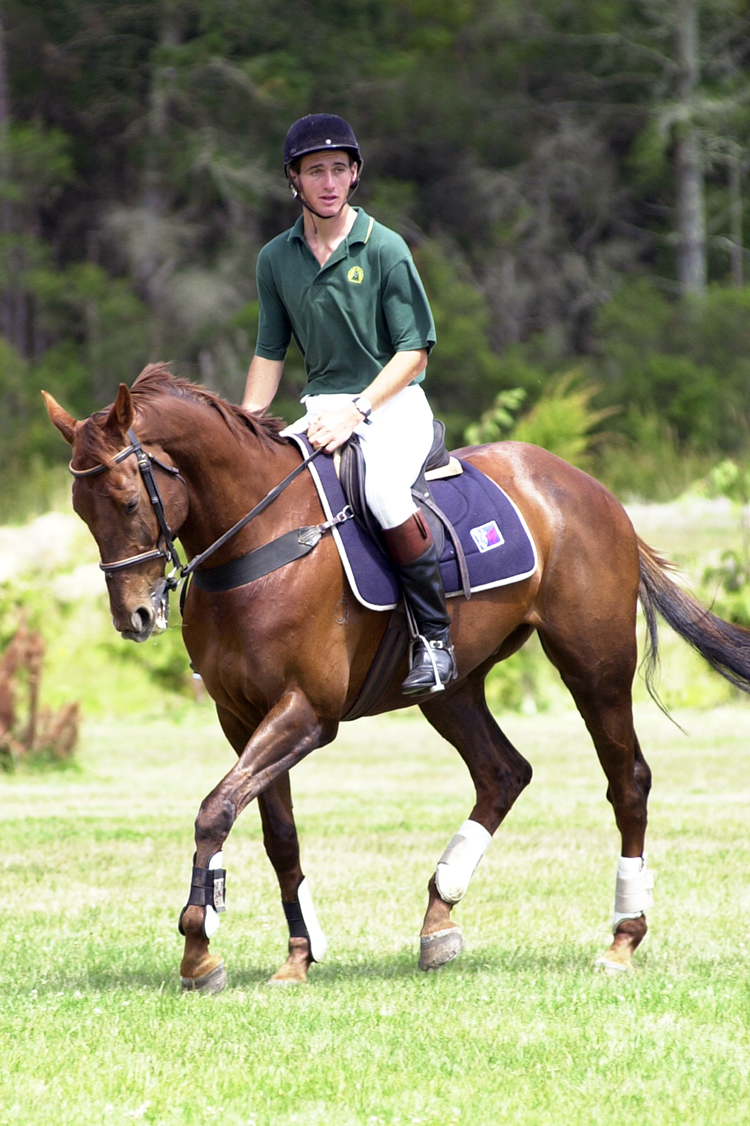 TIM CLARKE
TIM CLARKE
You were destined to be a rider – your mother was short-listed as an eventer, and your father a regular on the showjumping circuit?
“Horses have been around me for all my life. I can’t imagine doing much else but ride horses. I did pony club eventing when I was younger and that was good fun, but I’ve always preferred the showjumping.”
You have just spent some time training in Europe, how did that come about?
“My teachers suggested that after I finished Year 12, I have a gap year before uni. I was talking to a few of the more successful professional riders in Australia, and they said I should go overseas. While our showjumping season was on, I worked in our family business, and competed at the shows, and as soon as it was finished I was off. Gavin Chester had set me up with a job and I ended up working with four different people, and was still back for the start of our season. The place I worked was in Holland, for Shelly Redbart. She had a Brazilian international in her stables. I mainly worked the young horses and jumped them at the shows. Then I moved to Ludo Philippaerts in Belgium, he is really one of the top riders, at the Games or at World Cup level. The third person I worked for was Michael Whitaker. I strapped for him for two weeks, including Hickstead, then finally I worked for a good friend of mine who used to live near Sydney, Rohan Willis, he works for a well known ex-British rider, Fred Welch.”
“It was so good going to four different stables, and learning that even though they all have individual training methods, they all believe in a lot of ground work, lots of flatwork, and not much jumping between the shows. I also got to watch them at the bigger international shows – how they ride those bigger fences. Watching them warmup was really interesting as well as watching the actual competition.”
Was it different with all the specific bred horses over there?
“Where in Australia, we have the odd really good horse, they would have ten times the number. They mass produce jumpers, it’s like our racing industry but theirs is a showjumping industry. I think we’ve got some horses just as capable as theirs but they have so many more, and ten times as many shows so the horses get experienced at jumping the bigger fences.”
“I’ve always believed flatwork is important to build up the proper muscles for jumping, flatwork and hillwork. I’ve also always believed that if you jump them too much they get sick of it, and that was backed up by what I learnt in Europe. All the stables I went to believed in a lot of flatwork every day, mixed in with ‘woods’ work – road work here – and they jumped minimally during the week. At home I did a lot more jumping work than what they do over there, but again, we don’t have the shows every weekend like they do.”
“When we do have a show every weekend, I now I do minimal jumping during the week, and a lot of flatwork to try and keep the horses muscles toned and strong, and their wind good. Keep them keen to jump – so I don’t wear their legs out and make them sick of jumping. It was a real help to go to Europe and learn. I am very grateful that I won the Team Equestrian Scholarship, and that helped finance the trip. Team Equestrian wanted me to use the money wisely, and it turned out like that.”
What do you think you got out of the lesson with Vicki Roycroft?
“She showed me how I should work a hot horse to calm him down and get him to jump better. She suggested I do a lot more quiet work, getting him to listen to my leg better. She taught me the more you relax him, the more you can teach him.”
“This week I’ve warmed him up with quiet leg work, and I feel there is a definite improvement in the way he has performed. Thanks to Vicki, I do believe I have been riding better over the big fences, with more work like that over the next few months, I believe I can improve even more.”
Where did you find Harvest Moon?
“Roger came from a racing stable very near to where I live. My mum rings the racing trainers and asks if they have any horses – this trainer said ‘I’ve got an ex- steeplechaser that’s no good’. We bought him for $400, he was going to be mum and dad’s but he became my junior horse, and he has just proceeded from there. When I got him, he was a bundle of nerves. He would just keep turning on the spot, if you moved at all he would just take off because he was so hot and nervous. He is not much better but he has improved a little bit with age. My mum and dad like me to take my time with my horses, Roger has just been doing quiet rounds, not always against the clock, he has just started to mature – like people do- and to relax. We never knew how far he could go.”
“We jumped in the Futurity at Mt Gambier one year, and we thought his limit was C and D. We just kept on with him, B and C, A and B, and now he is learning to cope with World Cup classes.”
How ambitious are you?
“I just like to compete each weekend and see what comes along. I ride each weekend, and set goals to keep improving myself, and wherever that takes me, I go and enjoy it, and see what comes along.”
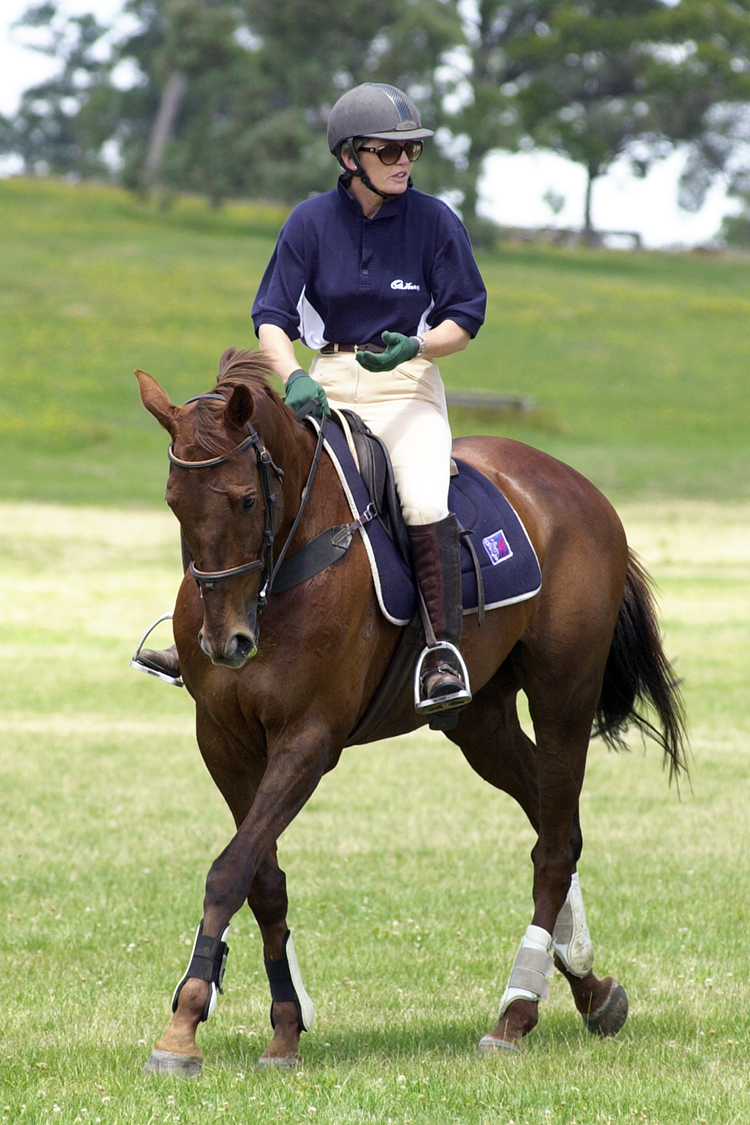 Vicki Roycroft on teaching Tim…
Vicki Roycroft on teaching Tim…
“It’s interesting with Tim Clarke because he’s been to Europe and seen how it should be done, how you’ve got to do it, and how much better the standard is. I find with someone like him I can be a little tougher, and say you’ve got to be a little more fussy. There is plenty of natural talent there, but he has got to improve his basics – boring old term – to be a better rider.”
“Timmy has very good feel, a very good eye for a distance, a very experienced rider now – but again he has come up not being quite aware of how important it is to keep a horse straight. Harvest Moon is A grade now, he is one of the best horses in Victoria, but for me, he has a lot of problems that will stop him going as far as the horse could go.”
“At least now Tim is aware that there are other ways to do it – it is very hard with that horse, he is very hot, he’s very electric. It is a situation where it is going to get worse before it gets better, and that is hard, when you are young and you are competitive and you want to win, the fact that you have to take three steps back before you take four steps forward, is a little hard. But genuinely that’s how I feel it has got to be, the horse has to go through a bit of a change, which is hard because it is older, to be a little bit better.”
“Whenever, I’ve got a horse that is already at Grand Prix level, it has taken me twelve months to get the best out of the horse. I can’t be like Gavin, or Ronnie or Chuggy, and just get on them and make them go. The horse has to be at a certain level of education before I am comfortable with it. It has been the same with all of them, Coalminer, Jadalco, True Colours, it has been twelve months of getting them to the stage where I feel comfortable with them. And in all cases I feel they have become better horses – even Coalminer who had been a very good horse before I got him. When I first got him there was no way he could add a stride in a line. He could cut them out and still jump them, but to be competitive in Europe he had to learn how to add strides, and that was very difficult for that horse. That is why it was a good twelve months before we got there.”
“I’d like to think I’m not a bad catch rider, but if I’ve got a horse on a long term basis, then often it will get worse before it gets better.”
Is this a problem where we have young riders making it through to A grade ranks without the basics?
“I don’t mind that so much. George Morris says the Americans have the opposite problem, they have all these little ‘hot house flowers’, they sit beautifully. They know how to leg yield and counter canter – but they can’t win a class! They have no initiative, they can’t kick them in the guts, or take a pull when they have to win. At the end of the day, it is still going to be the one that wins the class. So we have to get a happy medium here.”
“I have a lot of fun when I teach in places like the Phillipines or Japan, because the riders there sit beautifully and they’ve got a good concept – all you have to do is teach them how to be competitive. The difficulty here is changing bad habits – Timmy has bad habits and it’s a little hard for him to change those bad habits. He has to really want to do it, and see the point in changing.”
“I don’t say ‘Tim your heels are deep enough’ but I ask ‘Do you know why you have to have your heels down?’ There are good reasons – it stabilizes your lower leg and gets your weight down low, and that means you stay in the middle of the horse, it means you stay beautifully balanced.”
“When you do as Tim has done, go and look at the top riders in the world, one common denominator is that they are never out of balance. In Australia we are a bit entrenched in the idea of get the kids in the ring and get them winning first, and then maybe if they are ambitious and want to go further, they have to learn how to change. A whole bunch of us did that. I had a lot of bad habits I had to change, I’ve still got bad habits.”
Tim Clarke – fast forward to 2014/15
Tim Clarke was the leading rider of the Australian League FEI World Cup Jumping series for 2014/15, riding Caltango, who also won the Golden Grand Trophy for the Leading Horse for the third time in four year.
Great story about how Tim got Caltango, one of his first Warmblood jumpers
Tell me about Caltango?
She is a super little mare. I’ve been very privileged to have her. I got her from the Russell Johnstone auction, back in 2003. She has always loved jumping and luckily she is a ball of muscle and has a bit of ability, and she is a competitor. So I am very privileged to have her as a team member in the World Cups.
What attracted you to her at the auction?
Actually there were grids and a line up at end of the arena and every time she went up it, she went with gusto, and tucked her little legs up, and seemed to jump it easy. We went to the auction to buy something for my wife Ingrid, and when my parents saw her, and she was a Contango II horse, and they said if you can get her for $6000, buy her. I was bidding and I was the losing bid at $6000, so I thought I would put $100 in as well, so I went to $6100 and I got her. We broke her in, and my parents tried her and she didn’t really suit them, and then I took her on, it was a well-spent hundred bucks.”
This article first appeared in the March 2001 issue of THM.


